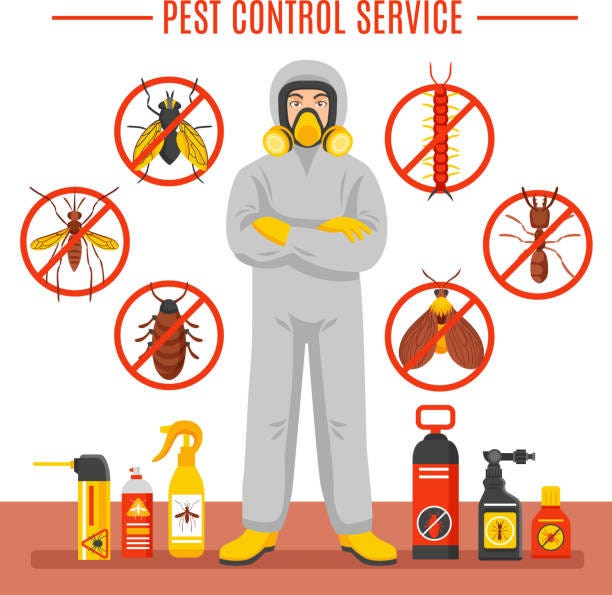Reliable A1 Bed Bug Exterminator Charlotte - Remove Bed Bugs Quick
Reliable A1 Bed Bug Exterminator Charlotte - Remove Bed Bugs Quick
Blog Article
Bed Insect Therapy Break Down: Contrasting Chemical Vs. Non-Chemical Solutions
In the realm of bug control, especially when handling the relentless issue of bed insects, the choice between chemical and non-chemical therapy solutions can be an essential one. Both approaches provide distinctive advantages and disadvantages, affecting factors such as efficiency, safety and security considerations, and general price. By analyzing the nuanced information of each approach, a clearer understanding of which path to go after in resolving a bed bug invasion can be obtained.
Performance of Chemical Treatments
Chemical therapies for bed insect invasions have been widely recognized for their powerful and quick efficiency in eradicating these bugs. When taking into consideration the efficiency of chemical treatments, it is essential to understand that they can provide a detailed and fast service to a bed bug trouble.
In addition, chemical therapies have the advantage of offering recurring results, indicating that they can continue to eliminate bed pests even after the initial application. This residual action is specifically helpful in combating any type of potential re-infestations. In addition, the fast action of chemical therapies can bring alleviation to individuals dealing with serious bed insect infestations, allowing them to reclaim control of their space rapidly.
Safety Interest In Chemical Solutions
One important element that needs mindful factor to consider when using chemical services for bed insect treatment is making sure the security of passengers and the atmosphere. Direct exposure to specific chemicals utilized in bed insect treatments can lead to breathing problems, skin inflammation, or other unfavorable reactions, especially in people with pre-existing problems or sensitivities.
Furthermore, the environmental impact of chemical solutions is another substantial factor to consider. Some chemicals utilized in bed insect treatments may be harmful to beneficial insects, wild animals, and ecological communities if they seep into the soil or water systems. It is important to use chemical therapies carefully, complying with safety guidelines, and taking into consideration much less harmful alternatives to minimize these threats and make sure the reliable and risk-free management of bed pest invasions.
Benefits of Non-Chemical Approaches
Thinking about the possible safety issues and ecological effect connected with chemical solutions for bed insect therapy, discovering non-chemical approaches provides an encouraging choice with several unique advantages. Non-chemical therapies are environmentally friendly, as they do not contribute to air or water contamination, making them a lasting selection for pest control.
In addition, non-chemical remedies can be reliable in targeting bed Visit Website pests, consisting of hard-to-reach areas where chemical therapies may not permeate - A1 exterminators charlotte nc. Approaches such as warmth treatment, vacuuming, steam cleansing, and cushion encasements provide thorough obliteration without the use of hazardous chemicals.
Limitations of Non-Chemical Treatments

Additionally, non-chemical therapies frequently call for multiple applications to achieve effective obliteration. This can be time-consuming and may not constantly assure complete removal of all bed insects and their eggs, specifically in hard-to-reach or concealed places.
In addition, the success of non-chemical treatments heavily counts on appropriate execution and thoroughness, which can be challenging for individuals without specialist knowledge. Insufficient application of non-chemical approaches may result in incomplete elimination, bring about consistent problems and the demand for additional treatments.
For that reason, while non-chemical treatments have their advantages, it is necessary to recognize these limitations and consider them when determining the most effective method for handling bed insect invasions.
Expense Comparison: Chemical Vs. Non-Chemical Options
Provided the restrictions connected with non-chemical treatments, a necessary facet to examine in the context of bed pest administration is the expense comparison between chemical and non-chemical options. Chemical treatments generally involve the application of pesticides by specialists, which can vary from $250 to $900 per space, depending upon the seriousness of the infestation and the size of the location to be dealt with. In comparison, non-chemical treatments like heat therapy or vapor can be a lot more costly, with costs ranging from $1,000 to $6,000 for a whole home. While the preliminary expense of chemical treatments might seem reduced, several therapies might be needed to fully eliminate the invasion, possibly enhancing the overall price. On the various other hand, non-chemical options might supply a much more green and sustainable remedy, although they can be cost-prohibitive for some people. Eventually, when taking into consideration the expense of bed insect therapy options, it is crucial to weigh the ahead of time costs against the performance and long-lasting sustainability of the picked technique.
Final Thought

Taking into consideration the possible security problems and ecological effect linked with chemical solutions for bed bug therapy, checking out non-chemical approaches provides an appealing alternative with numerous unique benefits.Offered the restrictions associated with non-chemical therapies, a necessary element to evaluate in the context of bed bug management is the expense contrast in between chemical and non-chemical alternatives. In contrast, non-chemical therapies like heat therapy or heavy steam can be more costly, with costs varying from $1,000 to $6,000 for an entire home. While the first cost of chemical therapies may appear lower, numerous treatments may be required to totally eliminate the problem, here potentially raising the general price.In final thought, when contrasting chemical and non-chemical bed insect therapy options, it is crucial to think about performance, safety, advantages, limitations, and expense.
Report this page